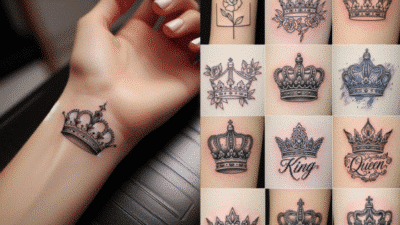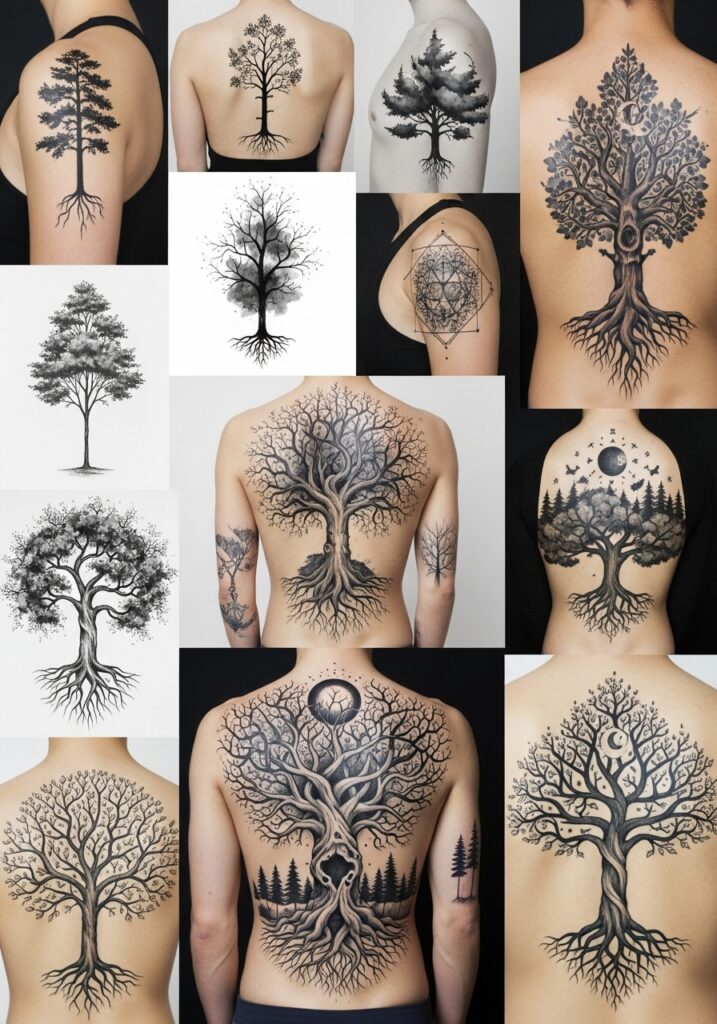

Trees have long stood as powerful symbols across cultures and civilizations, representing everything from life, growth, and wisdom to connection, resilience, and mortality. It is little wonder, then, that tree tattoos have become a deeply personal and universally resonant form of body art. More than just an aesthetic choice, a tree tattoo often encapsulates profound meaning, reflecting the wearer’s life journey, beliefs, and aspirations. From the intricate root systems that anchor them to the earth to the sprawling branches that reach for the sky, every element of a tree design can tell a unique story.
This comprehensive exploration delves into the rich symbolism embedded within tree tattoo designs and showcases the diverse artistic styles that bring these natural wonders to life on skin. Whether you are considering your first piece or adding to an existing collection, understanding the layers of meaning and the breadth of creative possibilities can help you design a tattoo that truly speaks to your soul.
The Enduring Symbolism of Tree Tattoos
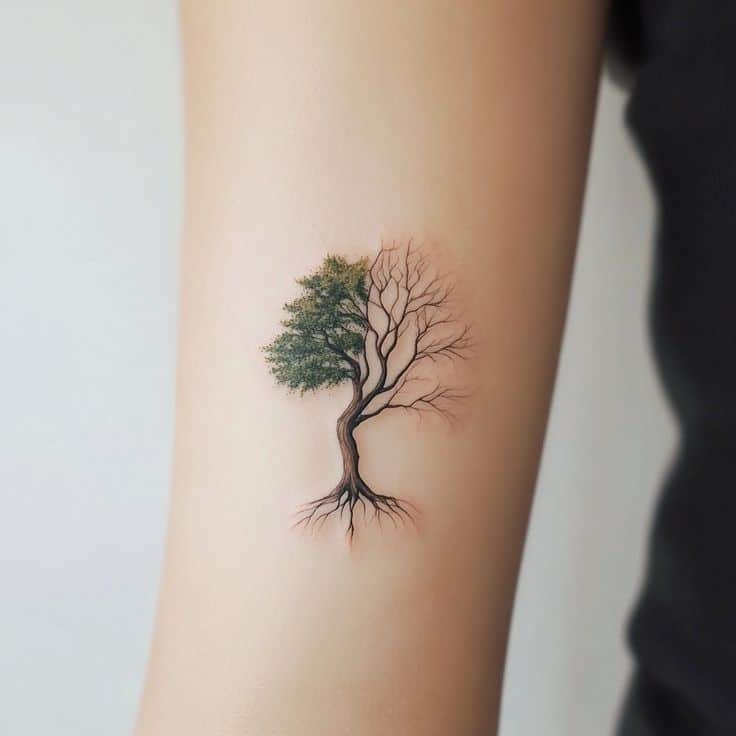

The fascination with trees as symbols dates back to ancient myths and spiritual traditions. Across religions and philosophies, trees are revered as conduits between the earth and the heavens, embodying a cyclical nature of life, death, and rebirth. This deep-rooted symbolism translates seamlessly into the world of tattoos, offering a wealth of interpretative depth.
Life Cycle and Growth: At its most fundamental, a tree represents life itself. Its journey from a tiny seed to a towering presence mirrors human development, growth, and the passage of time. A tree tattoo can symbolize personal evolution, overcoming obstacles, or marking a significant transition in life. The steady, unwavering growth of a tree, year after year, provides a powerful metaphor for enduring spirit and continuous self-improvement.
Strength and Resilience: Trees withstand the harshest elements – storms, droughts, and fires – often emerging stronger. Their sturdy trunks and deep roots embody incredible strength and resilience. For many, a tree tattoo serves as a constant reminder of their own ability to endure hardship, face challenges head-on, and remain firm in their convictions, much like a steadfast oak.
Connection to Nature and Spirituality: In many cultures, trees are sacred, seen as living entities imbued with spiritual significance. They represent the interconnectedness of all living things and our primal link to the natural world. A tree tattoo can signify a deep appreciation for nature, a commitment to environmentalism, or a spiritual connection to the earth’s energy. It can serve as a personal totem, grounding the wearer and fostering a sense of belonging to the larger ecosystem.
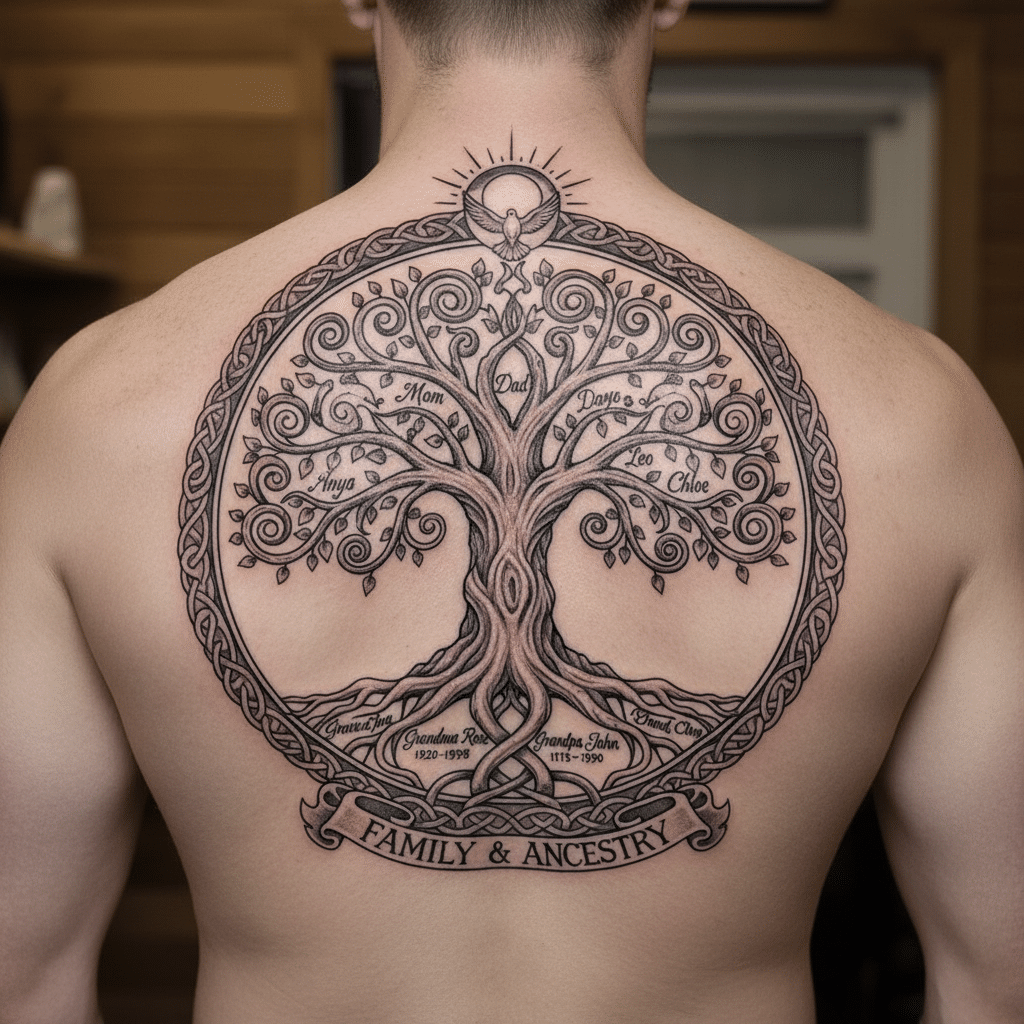

Wisdom and Knowledge: Ancient trees, with their gnarled branches and deep roots, often appear as silent witnesses to centuries of history. They are seen as keepers of wisdom and knowledge, representing enlightenment and profound understanding. A tree tattoo can symbolize a quest for knowledge, intellectual growth, or reverence for ancestral wisdom. It can mark a period of significant learning or a lifelong dedication to understanding the world.
Family and Ancestry (The Tree of Life): Perhaps one of the most powerful and widely recognized symbols is the Tree of Life. This motif, prevalent in various mythologies, represents the interconnectedness of all creation, linking heaven and earth, mind and body, and all forms of life. As a tattoo, the Tree of Life often symbolizes family, lineage, and ancestry, with roots representing heritage and branches extending to future generations. It can commemorate loved ones, celebrate family bonds, or honor one’s personal history. The intricate designs often seen in Tree of Life tattoos can also evoke a sense of universal harmony and balance.
Individual Interpretations: Beyond these universal meanings, the symbolism of a tree tattoo can be highly personal. The specific type of tree, its state (e.g., blossoming, bare, evergreen), and additional elements incorporated into the design can all add unique layers of meaning. For instance, a blossoming tree might signify new beginnings and hope, while a bare tree could represent resilience through loss or a stripped-down honesty.
Key Elements and Meanings in Tree Tattoo Designs
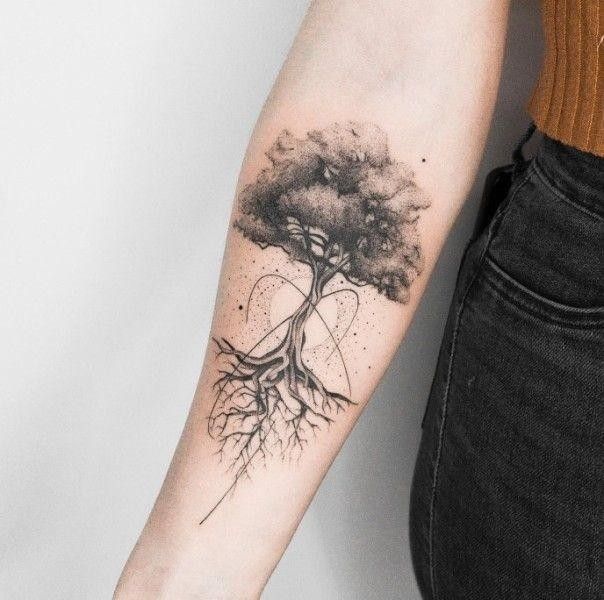

Every component of a tree contributes to its overall symbolism, allowing for highly nuanced and personalized tattoo designs.
- Roots: The foundation of the tree, roots symbolize grounding, stability, heritage, and connection to one’s origins. Deep, sprawling roots can represent a strong family lineage, a solid personal foundation, or a profound connection to the earth. They can also signify growth from adversity, showing how one draws strength from their past.
- Trunk: The trunk embodies the core self, strength, individuality, and the journey of life. A sturdy, straight trunk can indicate unwavering character, while a gnarled or scarred trunk might reflect resilience through life’s trials. The path of the trunk often mirrors the individual’s personal journey.
- Branches: Reaching upwards and outwards, branches represent growth, expansion, choices, and interconnectedness. They can symbolize a growing family, diverse experiences, or the different paths one has taken in life. Intertwined branches can denote unity, friendship, or a close-knit community.
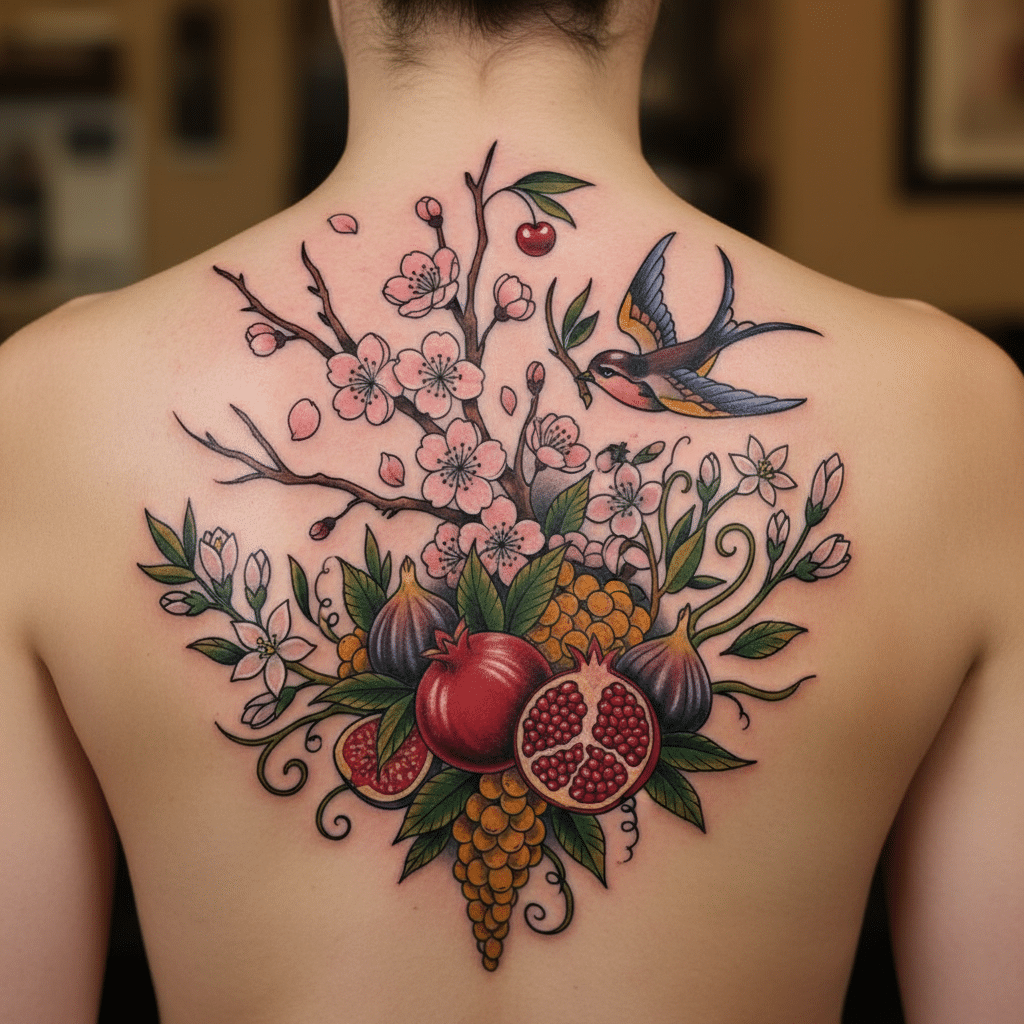
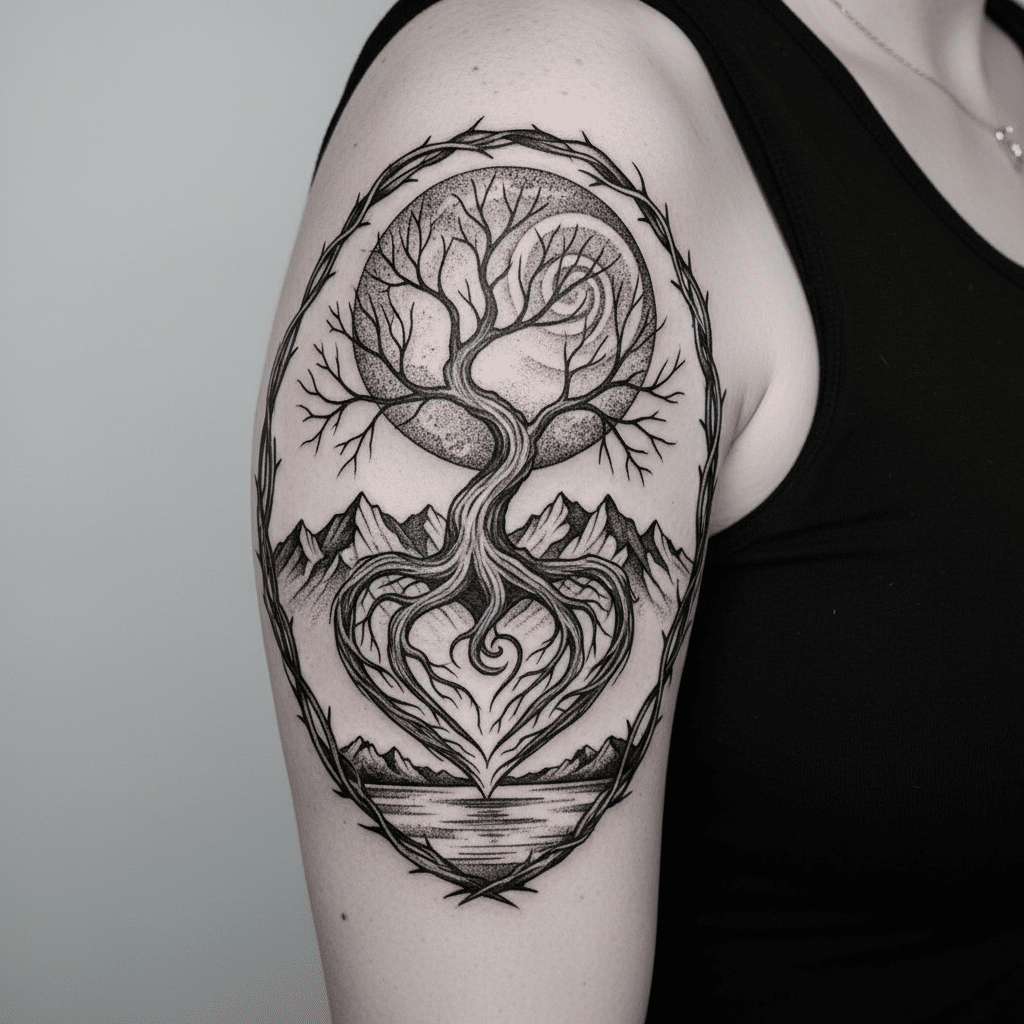
- Leaves: Leaves signify life, vitality, renewal, and specific seasons. Green leaves indicate flourishing and vitality, while autumn leaves can symbolize change, transition, or the beauty of letting go. A single leaf might represent individuality, while a canopy of leaves speaks to abundance and shelter.
- Fruits/Flowers: These elements symbolize fertility, abundance, beauty, and new beginnings. Blossoms, like those of a cherry tree, often represent ephemeral beauty and the fleeting nature of life. Fruits can signify the rewards of labor, prosperity, or the sweetness of life’s experiences.
- Bare Trees: A tree stripped of its leaves conveys a different kind of beauty – one of starkness, resilience, and endurance through hardship. It can symbolize survival, overcoming loss, or finding beauty in simplicity and vulnerability. It can also represent reflection or a period of introspection.
- Trees with Birds/Animals: Incorporating other creatures can amplify a tree’s symbolism. Birds often signify freedom, hope, spirituality, or a connection to the heavens. Animals at the base of a tree might symbolize protection, instinct, or a specific spirit animal connection. A nest in a tree, for example, often represents home, family, and nurturing.
Popular Tree Species and Their Unique Meanings

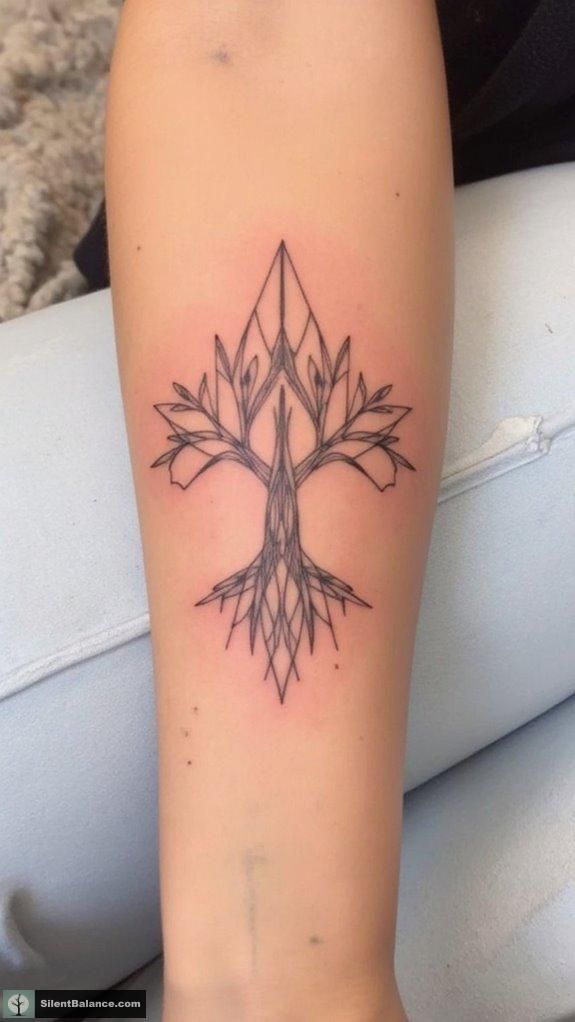
Different tree species carry their own distinct historical and cultural associations, making the choice of tree type a critical part of the tattoo’s message.
- Oak Tree: Synonymous with strength, endurance, wisdom, and honor, the oak is a majestic and long-lived tree. An oak tattoo often represents steadfastness, fortitude, and a deep connection to ancestral roots. It’s a popular choice for those who value resilience and traditional virtues.
- Willow Tree: Known for its graceful, drooping branches, the willow symbolizes flexibility, healing, inner strength, and resilience in the face of adversity. Its ability to bend without breaking makes it a powerful emblem for adapting to life’s challenges. A willow tattoo can represent overcoming sadness or finding beauty in melancholy.
- Birch Tree: With its distinctive white bark, the birch signifies new beginnings, purification, protection, and adaptability. In many cultures, it’s associated with renewal and fresh starts, making it a fitting choice for those embarking on a new chapter in life.
- Pine Tree: As an evergreen, the pine symbolizes longevity, wisdom, peace, and eternal life. It represents enduring spirit and the ability to thrive even in harsh conditions. A pine tattoo can convey a sense of calm, resilience, and an unwavering spirit.

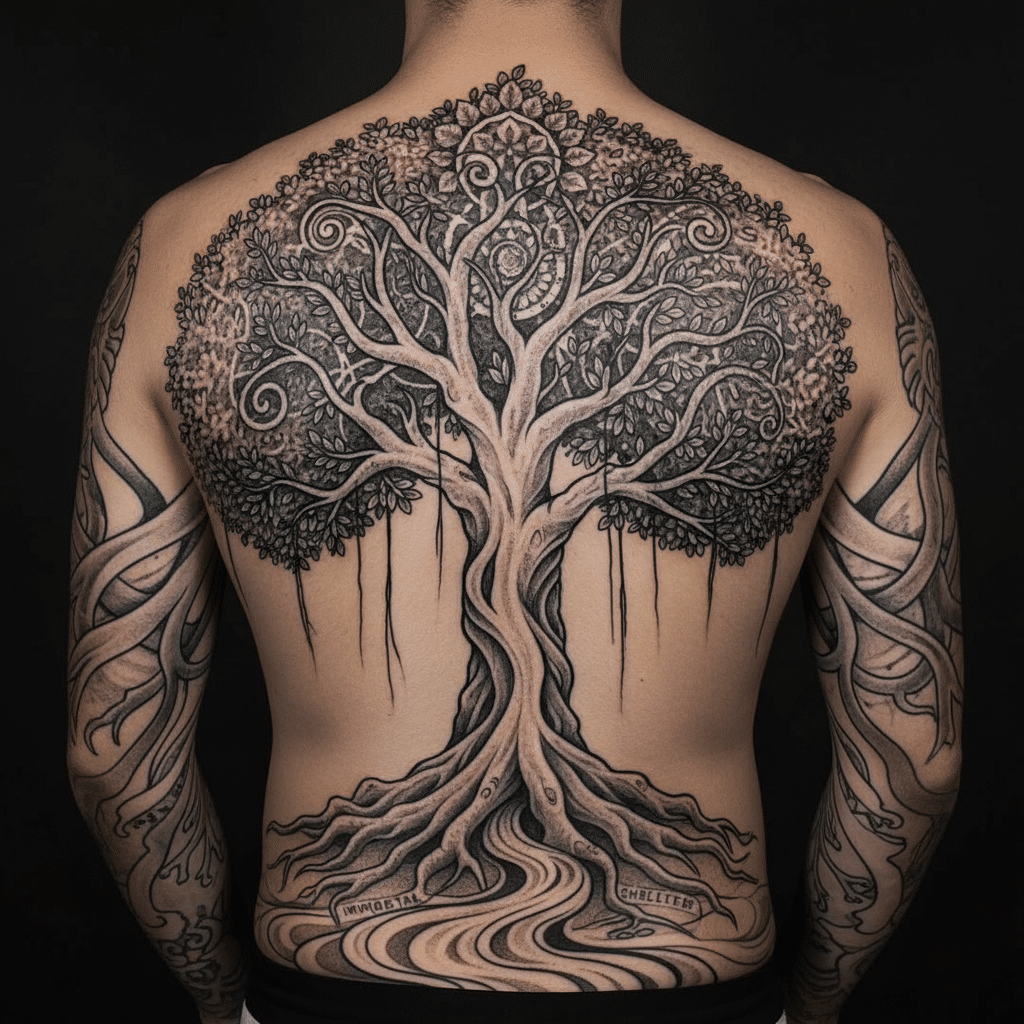
- Cherry Blossom (Sakura): Though technically a flower, the cherry tree itself is deeply symbolic, particularly in Japanese culture. Sakura tattoos represent the ephemeral beauty of life, its transient nature, and the concept of mono no aware (a poignant appreciation of the fleetingness of things). They also symbolize love, hope, and renewal. For those seeking other floral expressions, a flower tattoo designs article offers a broader perspective.
- Banyan Tree: With its aerial prop roots that grow into new trunks, the banyan tree is often called the “immortal tree.” It symbolizes immortality, shelter, community, and spiritual growth. Its sprawling nature can represent the vastness of life and interconnectedness.
- Maple Tree: Recognized for its vibrant autumn foliage, the maple tree symbolizes strength, endurance, balance, and generosity. In Canada, it’s a national emblem, representing national pride. A maple leaf tattoo can signify a love for nature, change, or a connection to a particular heritage.
- Baobab Tree: Found primarily in Africa, the baobab is known for its immense size and incredible longevity, sometimes living for thousands of years. It symbolizes longevity, life in harsh conditions, wisdom, and a strong connection to ancestors and ancient knowledge. A baobab tattoo speaks to resilience and a profound respect for history.
Diverse Artistic Styles for Tree Tattoos
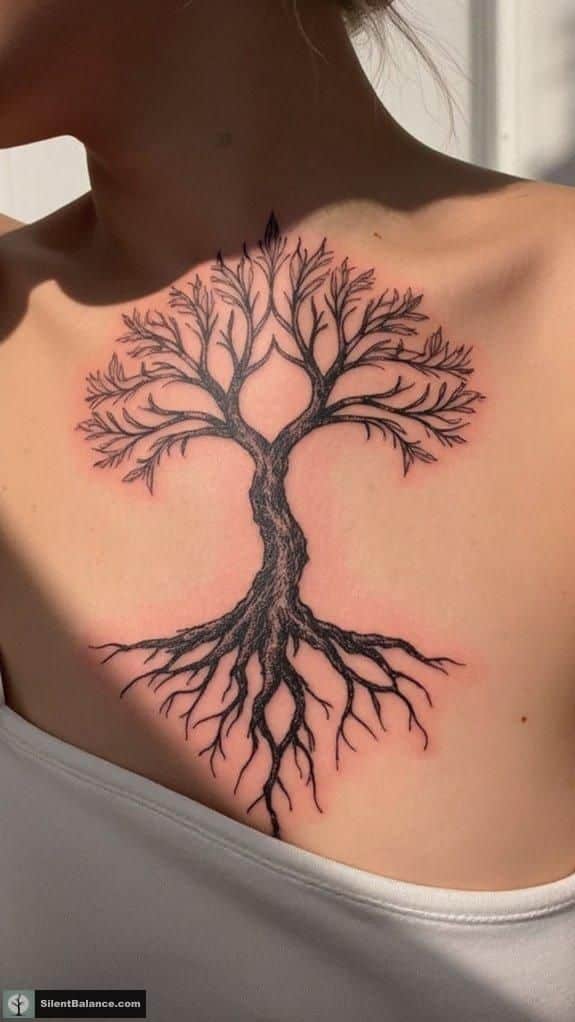
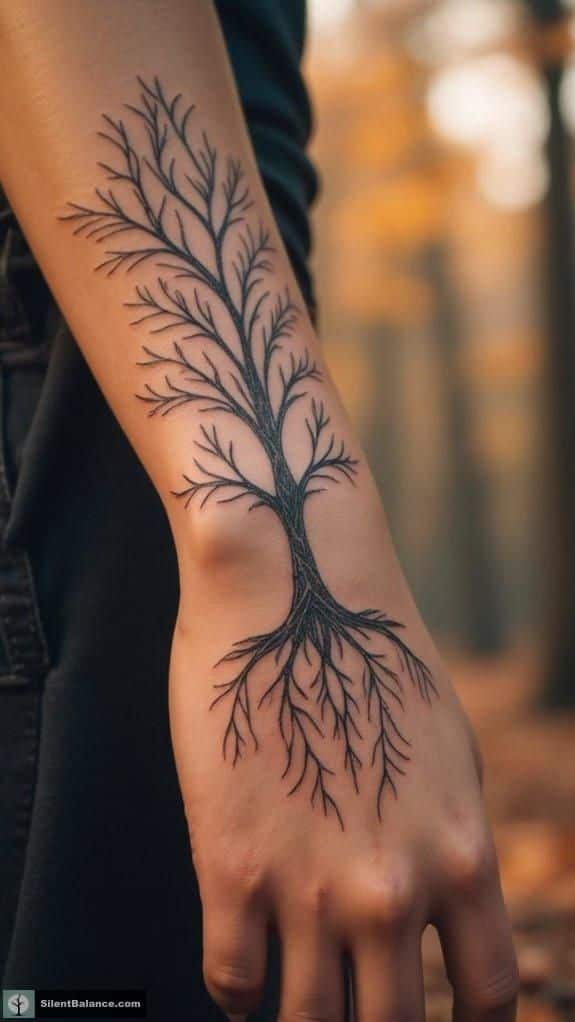
The chosen artistic style profoundly impacts the tree tattoo’s aesthetic and emotional resonance. Each style offers a unique way to interpret and portray the natural beauty and symbolism of trees.
- Realistic/Photorealistic: This style aims to capture the tree with incredible detail, mimicking a photograph. It involves intricate shading, precise textures of bark and leaves, and a deep understanding of light and shadow. Realistic tree tattoos are stunning for their lifelike quality, often making the tree appear to almost emerge from the skin.
- Watercolor: Characterized by its fluid, painterly effect, watercolor tattoos use soft washes, splatters, and gradients to create vibrant, ethereal designs. A watercolor tree can appear dreamy and artistic, emphasizing the flow and movement of nature rather than strict anatomical accuracy. The colors often blend seamlessly, giving a dynamic and often abstract feel.
- Dotwork/Stippling: This intricate style uses thousands of tiny dots to create shading, texture, and depth. Dotwork tree tattoos can range from delicate and minimalist to highly complex and sculptural, often resulting in a unique, almost engraved appearance. It’s particularly effective for creating a sense of ancientness or ethereal quality.
- Blackwork/Linework: Blackwork tattoos rely heavily on solid black ink, bold outlines, and strong silhouettes. This can range from minimalist linework designs that capture the essence of a tree with simple strokes to intricate patterns and dense black areas. Linework focuses on form and structure, often creating powerful, graphic representations.
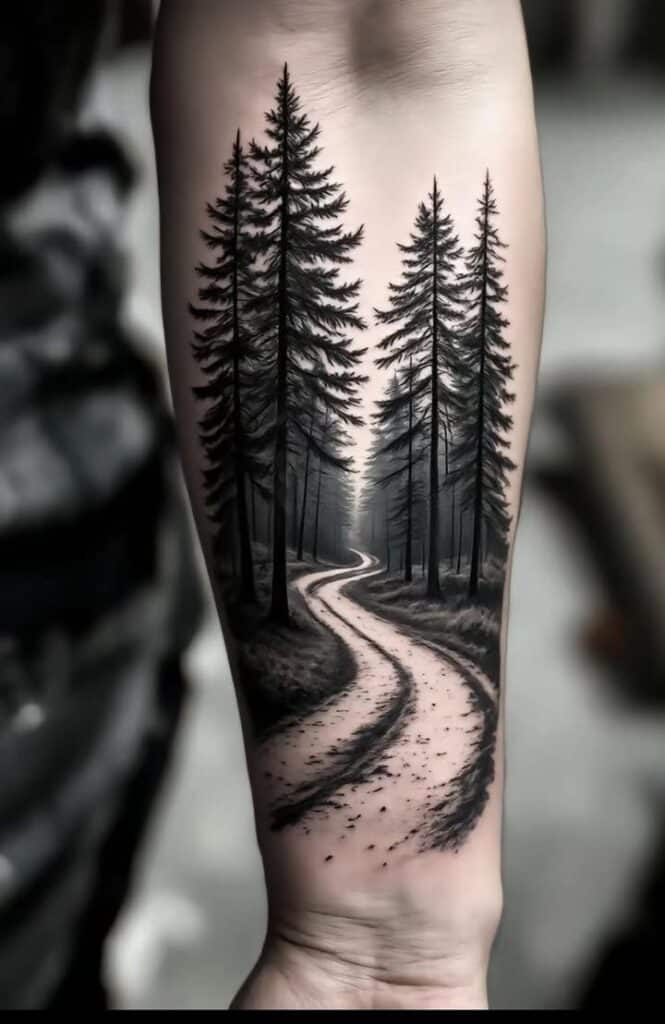

- Geometric/Abstract: This modern style integrates geometric shapes, lines, and patterns into the tree design. Abstract tree tattoos deconstruct the natural form, representing its essence through innovative designs. This style often carries a contemporary and symbolic edge, appealing to those who appreciate modern art and unique interpretations.
- Traditional/Neo-Traditional: Traditional tattoos, inspired by classic American and Japanese styles, feature bold lines, a limited color palette, and iconic imagery. Neo-traditional updates this with more diverse colors, greater detail, and refined shading, while retaining the strong outlines. A traditional tree might be depicted in a robust, illustrative manner, often combined with other elements like birds or banners. For those exploring different classic motifs, examining rose tattoo designs can provide insight into other enduring symbols.
- Celtic/Norse: Drawing from ancient cultures, these styles often incorporate intricate knotwork, spirals, and symbolic patterns. A Celtic or Norse tree tattoo typically features the Tree of Life intertwined with complex knot designs, representing eternal cycles, heritage, and spiritual connection.
- Tribal: Characterized by bold, flowing lines and abstract patterns, tribal tattoos often draw inspiration from indigenous art forms. A tribal tree design might use stylized curves and sharp points to represent the tree’s form and power, often carrying deep cultural or personal significance.
- Minimalist: This style focuses on simplicity, using clean lines and minimal detail to convey the essence of a tree. A minimalist tree tattoo is often small, subtle, and elegant, relying on suggestion rather than overt illustration to evoke its meaning. It’s perfect for those who prefer understated yet meaningful body art.
For broader inspiration on unique and eye-catching designs, exploring galleries of cool tattoos can offer diverse ideas that resonate with different personal aesthetics.
Placement Considerations for Tree Tattoos

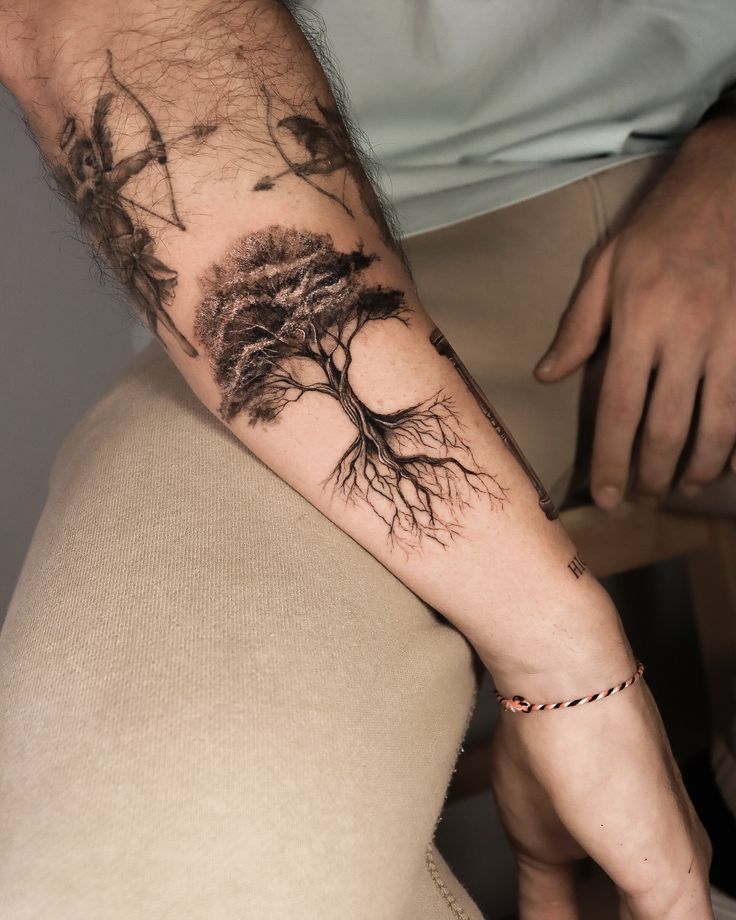
The placement of a tree tattoo is almost as important as the design itself, influencing its visibility, how it flows with the body, and even its personal significance.
- Back: The back offers a large, flat canvas, ideal for intricate and sprawling tree designs, full forests, or a grand Tree of Life mural. It allows for a design that can be easily concealed or showcased, making it versatile.
- Arm/Sleeve: The arm, from the shoulder to the wrist, is a popular choice for its visibility and adaptability. A tree can be designed to wrap around the arm, forming a half or full sleeve. This area is excellent for narrative designs where roots might start at the wrist and branches extend upwards.
- Leg/Calf/Thigh: Similar to the arm, the leg provides a significant surface area for vertical tree designs. The calf is popular for its prominence, while the thigh allows for larger, more private pieces. These areas are versatile for both elaborate and simpler designs.
- Ribs/Side: While potentially more painful due to proximity to bone and thin skin, the ribs and side of the torso allow for elegant, elongated tree designs that follow the natural curvature of the body. This placement is often chosen for deeply personal or discreet tattoos.
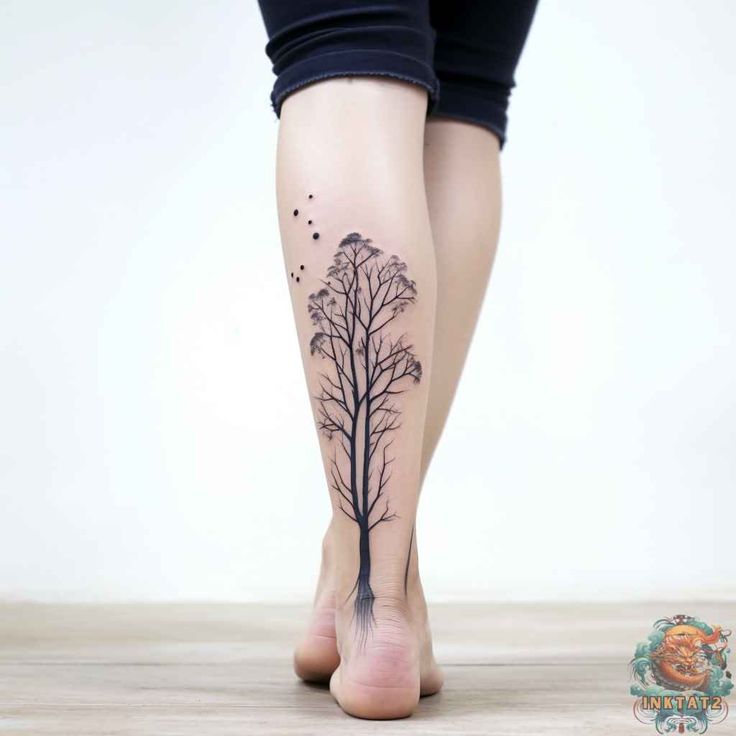
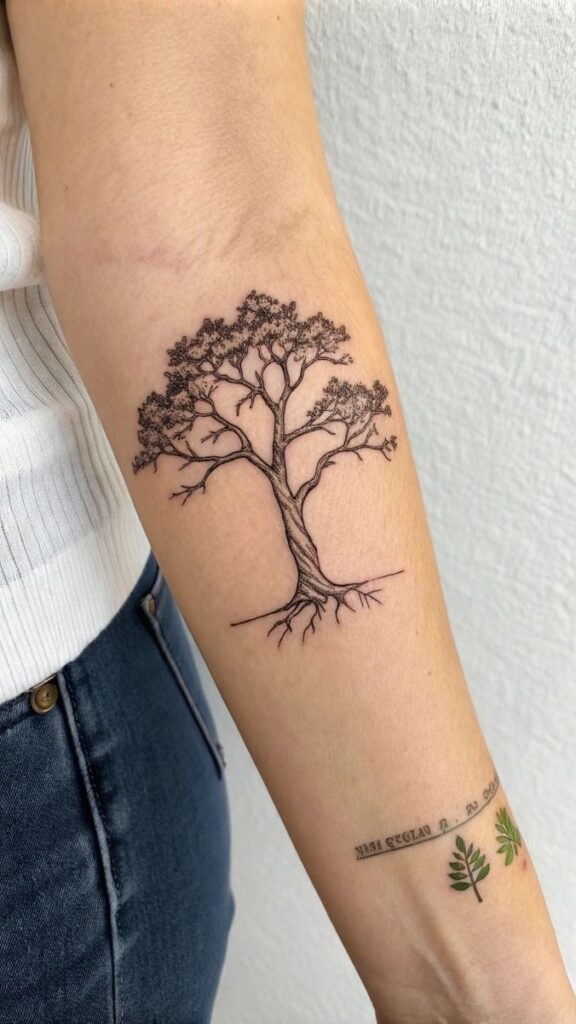
- Forearm/Wrist: These areas are suitable for smaller, more delicate tree designs. A single tree or a simplified silhouette can be a constant personal reminder, visible to the wearer and others. The wrist is particularly popular for subtle, meaningful pieces.
- Chest/Sternum: A tree tattoo on the chest or sternum is typically deeply personal, often symbolizing something close to the heart. It’s an area chosen for designs with profound emotional or spiritual significance.
- Ankle/Foot: Discreet and often associated with grounding or journey, an ankle or foot tattoo can symbolize roots, a path, or a subtle connection to nature. These areas are ideal for smaller, elegant designs.
Designing Your Perfect Tree Tattoo
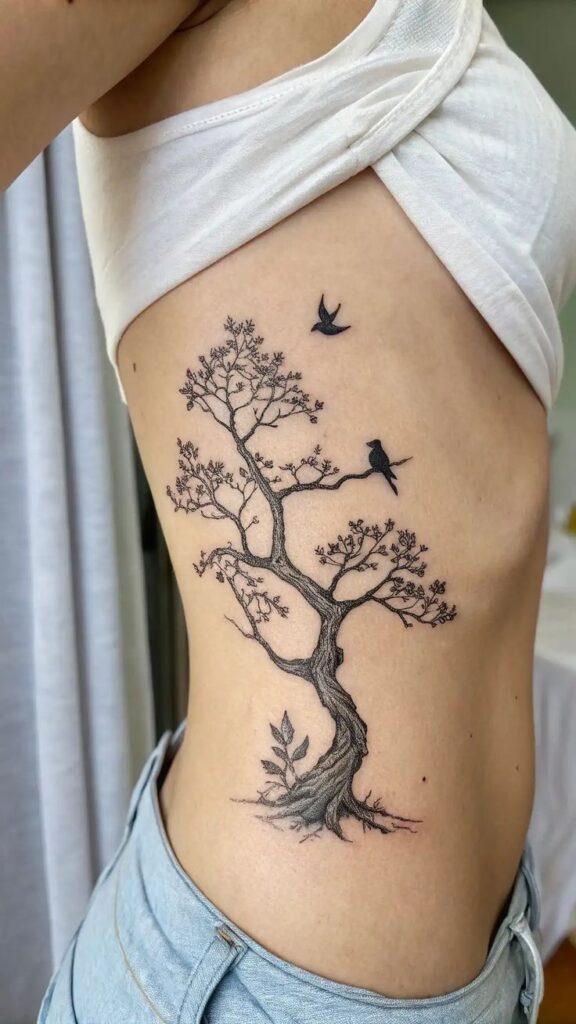
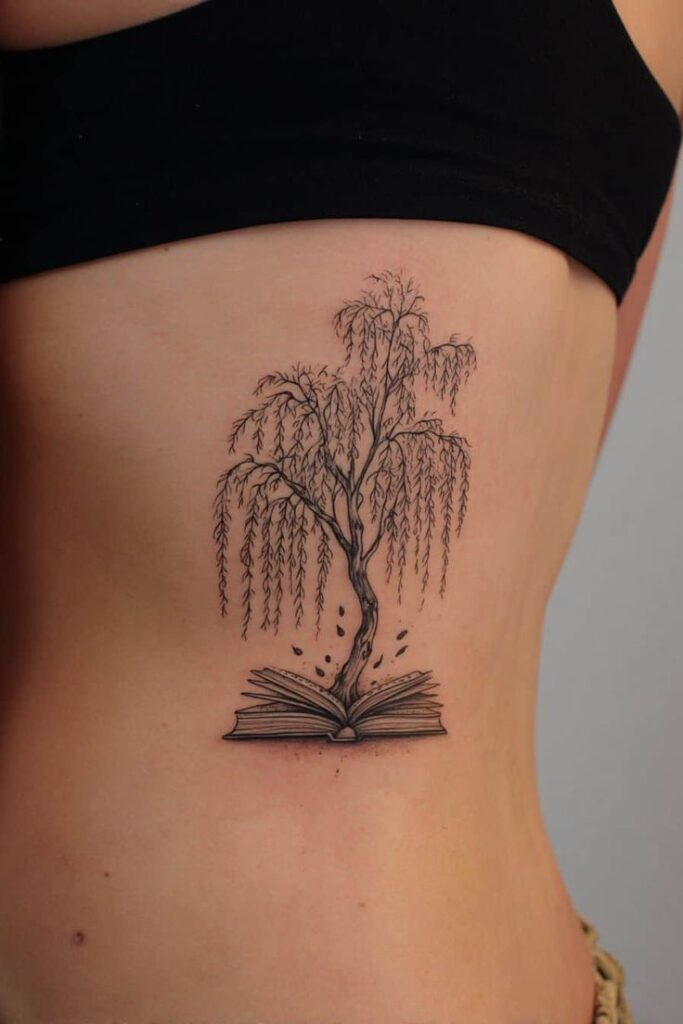
Creating a tree tattoo that truly resonates requires thoughtful consideration and collaboration with a skilled artist.
Reflect on Personal Meaning: Before you even look at designs, consider what a tree symbolizes for you. Is it strength, family, a specific memory, or a life philosophy? Understanding your core motivation will guide your choices. Perhaps you want to represent a period of growth, or a loved one who grounded you.
Research Tree Species: Delve into the symbolism of different tree types. Does the resilience of an oak speak to you, or the grace of a willow? The specific characteristics of a tree can add layers to your tattoo’s story. Think about local trees from your childhood or trees with cultural significance you identify with.
Choose an Artistic Style: Explore the various styles discussed above. Do you prefer the realism that brings nature to life, the ethereal quality of watercolor, or the bold statement of blackwork? Your chosen style will define the aesthetic of your tattoo. Browsing nature drawings can also provide inspiration for different artistic interpretations of trees and their elements.
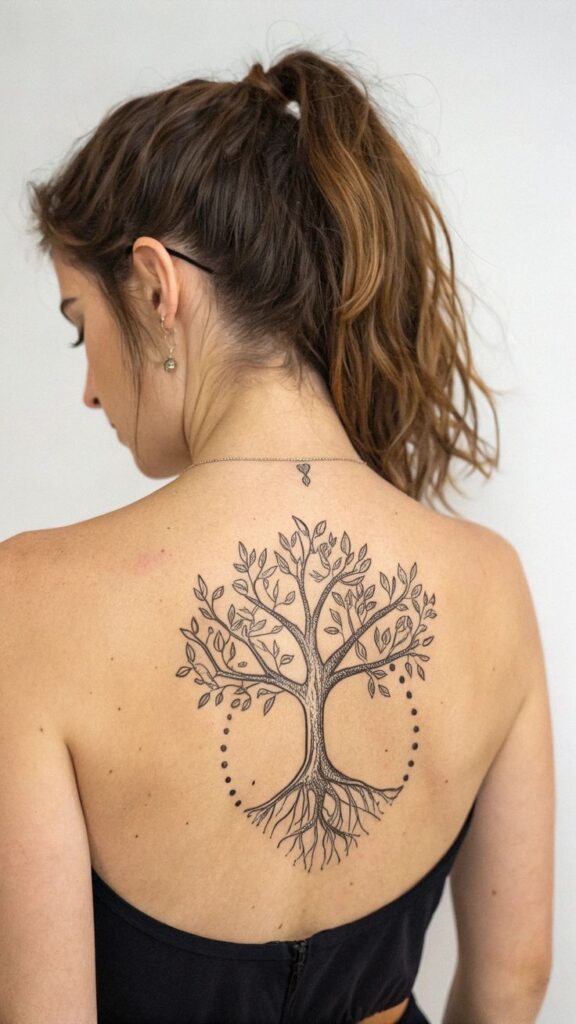
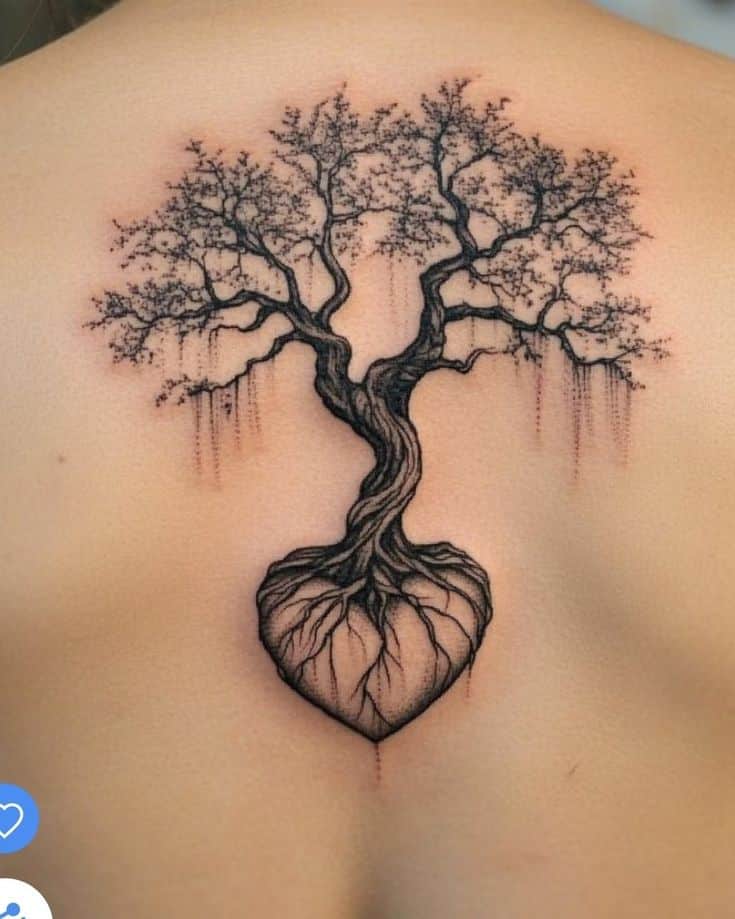
Consider Placement and Size: Think about where on your body you want the tattoo and how large you envision it. A full back piece allows for a detailed forest, while a wrist might host a minimalist silhouette. The placement should also consider how the tree’s shape and flow will complement your body’s anatomy.
Consult with an Artist: Once you have a general idea, find a tattoo artist whose style aligns with your vision. A professional artist can offer expert advice on design, placement, size, and color palette. Share your ideas, symbols, and any reference images you have. A good artist will collaborate with you to refine the concept and create a unique, personalized piece. They can suggest ways to enhance the design, ensure it ages well, and make it visually striking.
Maintenance and Aftercare: Remember that a tattoo is a permanent piece of art that requires diligent aftercare. Follow your artist’s instructions carefully to ensure proper healing and longevity of your design. This includes keeping it clean, moisturized, and protected from the sun, especially during the initial healing phase. Well-cared-for tattoos retain their vibrancy and detail for years to come.
Conclusion
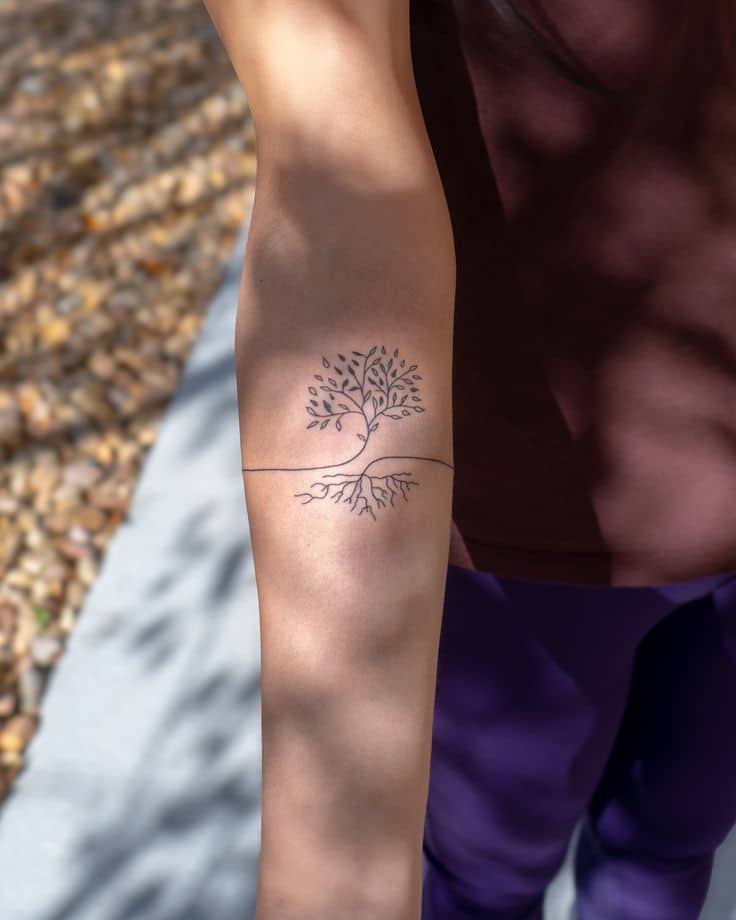
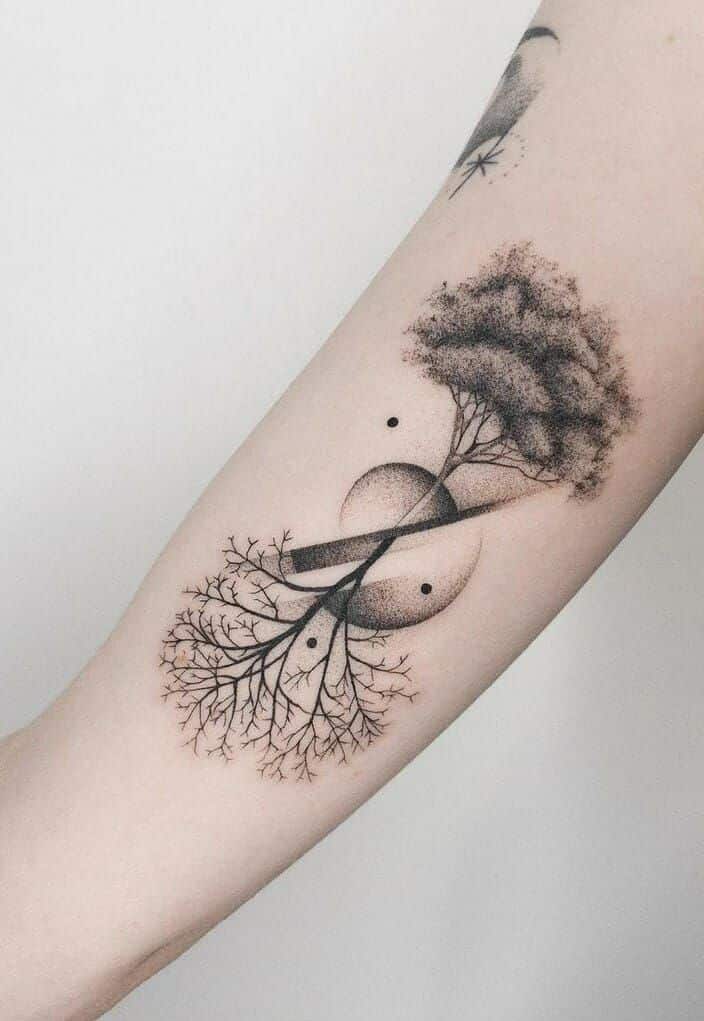
Tree tattoo designs are far more than mere decorative markings; they are profound expressions of personal identity, connection, and life’s enduring journey. From ancient symbols of life and wisdom to modern artistic statements, trees offer an inexhaustible source of inspiration for body art. Each root, trunk, branch, and leaf can be imbued with deep personal significance, reflecting one’s heritage, resilience, growth, and connection to the natural world.
By thoughtfully considering the rich tapestry of symbolism and exploring the vast array of artistic styles, you can embark on a creative journey to design a tree tattoo that is not only visually stunning but also deeply meaningful. Let your chosen tree stand as a testament to your personal story, a permanent reminder of the strength, beauty, and wisdom that define you. Take the time to research, reflect, and collaborate with a talented artist to bring your vision to life, creating a piece of art that will continue to grow and resonate with you for years to come.
- 2shares
- Facebook0
- Pinterest2
- Twitter0

